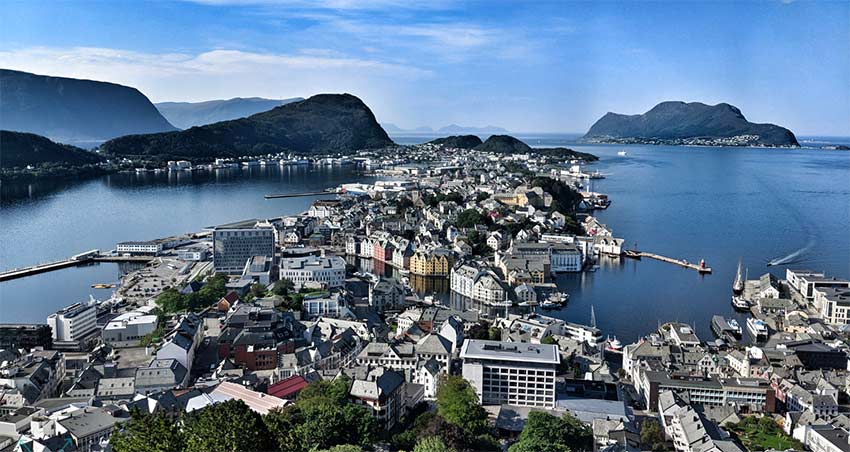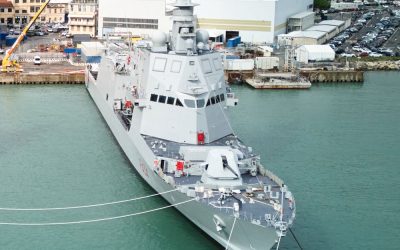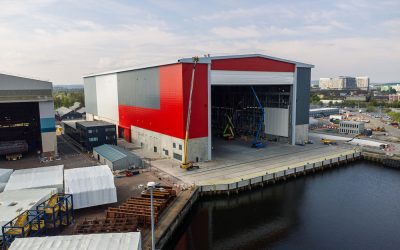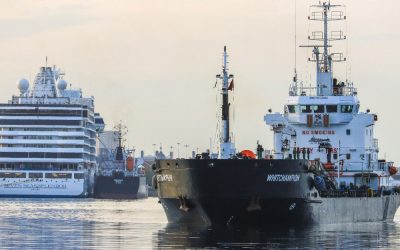The GCE Blue Maritime cluster comprises more than 100 Norwegian ship designers, yards and OEMs. Recently, it has set out a new strategy of fully decarbonising, and becoming “the world’s full scale net-zero maritime cluster,” explains Daniel Garden, CEO of GCE Blue Maritime.
“Throughout the pandemic, we made up a new strategy called the new blue deal,” he says. “The ambition is to have a standing internationally for having the latest innovations and technologies, and we believe the climate crisis is something we can throw at these companies and see what they come up with.”
It has been a tough few years. During a period when oil prices soared to over US$100 per barrel and stayed there for four years, it seemed as though a new offshore support vessel, platform supply vessel or anchor handler was being delivered every other day. But then one day in June 2014, it suddenly cratered, and kept going, taking the Norwegian oil and gas sector with it.
“There were a lot of PSVs laid up because of the rates, and some were even decommissioned,” says Garden.
Adjusting to the new reality, Norway’s ship designers and yards began to diversify into new sectors. With an abundance of laid-up workboats, some decided to convert them to other uses, such as aquaculture vessels, and latterly, offshore wind farm support vessels, which would come to be known as commissioning, service and operation vessels (CSOVs.)
“Some of the findings from those rebuilds is that a PSV is much larger than an SOV, which means you have a lot of space to play with. So PSVs are quite good for rebuilding into smaller vessels, with space to put in new systems, battery packs and different types of deck machinery.”
By the time 2018 came around, the Norwegian maritime cluster was busy inventing a new sector almost out of whole cloth: the expedition cruise sector, one which would require imaginatively luxurious vessels, but also technologically advanced, in the manner Norwegian shipbuilding had come to be famous for. It was not long, though, before Covid-19 brought a sharp end to single cruise itinerary in the world.
Emerging from sequential crises wiser and better diversified, Norway’s maritime cluster ploughs ahead with the next thing – whatever that is. “At the moment there is about EUR6.1bn in the [cluster] orderbook, combined,” explains Garden. “Most of the equipment manufacturers have a significant export share of 70%.”
Oil and gas remains the largest segment; but other segments are catching up. “If we combine cruise and ferries, it is about the same size. Aquaculture is also growing quite heavily,” he adds.
In fact, aquaculture is only 2% behind the oil and gas segment, in terms of market share, showing that the sector has learned a lesson since 2014. Meanwhile, the cruise segment is making a slow return, necessitating some of those highly advanced vessels built for challenging conditions. “There is a lag to get customers back to planning their holidays, but it looks like [expedition cruise] vessels are back in operation. Not all are fully booked… but the newbuild programme has started again.”
With the Russo-Ukraine war driving up oil prices close to their 2014 levels, owners of oil and gas vessels who managed to stay extant are now reaping the benefits, and the conversions to CSOVs have ceased entirely. “Most of those [laid up PSVs] are now back in traffic,” Garden says.
While the tendency may have weakened in recent years, with many Norwegian owners choosing “good enough” vessel constructions in Turkey or China over local content, Garden notes that, proportionally, shipowners within the cluster tend to build more of their vessels more locally, in proportion with other maritime clusters.
Another tendency, thanks to the close relationship between Norwegian shipbuilders and shipowners, is experimentation, with vessels often serving as a testbed for new technologies. “Studies by the Norwegian Technical University show that there is no single solution that will take us all the way to zero emissions. We can reduce emissions by looking at the shape of the hull, the waste heat recovery, cold ironing… so many things. So we as a cluster need to look into this,” Garden concludes.






